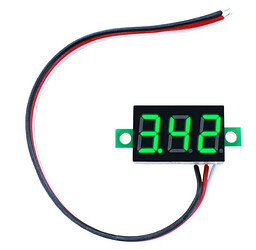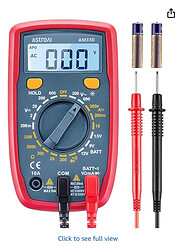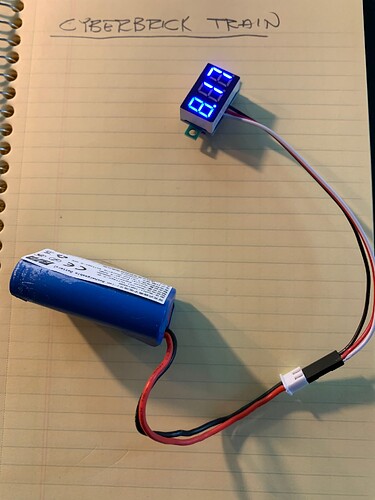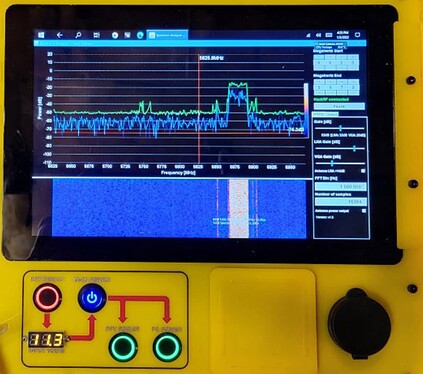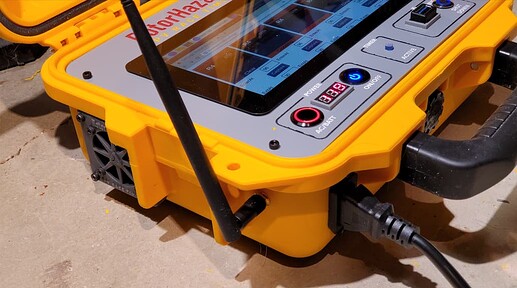The cell checker won’t work for this pack (unless the connector on the battery will fit the NiCd port on the thing). It’s not simply a matter of bridging the - and pin 2 because it’s a 2 cell pack. For the checker to work, pin 1 will need to be connected to a point between the two cells in the pack. That’s what a balance tap would do, provide that 3rd connection point. The cell checker is designed to work with a balance tap. Which this battery doesn’t have. 
A digital multimeter is all you need. If you don’t own one, you could by tomorrow for less than $20 off Amazon or by taking a run to your local home improvement store. You don’t need an expensive, precision instrument like a Fluke multimeter. For this, high accuracy isn’t necessary. Even a cheap meter will be good to 1/10ths of a Volt and that’s enough to tell if the pack is charged or discharged or dead… 
I own a few Fluke meters (because I do electronics stuff all the time). But for my field box (what I take with me when I go fly model airplanes and race drones), I have a $15 meter from Harbor Freight. Although, all my batteries have balance taps, so I also have a cell checker.
2 Likes
Maybe I should look into designing a small module, that can do double duty and both power a Cyberbrick Core Board and get the voltage into a range manageable for the analog read input, so that people can make their own Cyberbrick battery pack checker, with something like 5-6 LED to show it’s state of charge. One of the servo connectors on the receiver shield can maybe be (mis)used for analog input. It seems to have the same 1K resistor in series as the L1-3 and R1-3 inputs on the Transmitter.
A simple voltage divider would do that. Two resistors in series. Voltage you get is a function of the ratio of the two resistors to each other.
That being said, why build when you can buy? 
Something like this is about as cheap as you can go. I have some of these, I use for voltage readouts on portable electronic equipment I build. Less than $2.
Or, if you want an instrument that’s good for more than just displaying voltage, something like this can be had for the <$20 I mentioned earlier…
The forum does not appear to want to let me embed any links. When I do, I get this error:
Both of these items were found with a google for “digital volt meter”.
I like to build stuff 
And I kind of think it might be useful for other stuff too… like having it built in to a CyberBrick RC model, showing remaining capacity, or maybe sending it back to the transmitter for an alert.
I have been using this volt/amp meter in many of my builds to monitor the battery voltage. simular to the one rocketsled posted. You could splice or wire this meter into the battery circuit if you want. Also, this is a 2 cell battery wired in series to get the 8+ volts, you can tell by it’s shape and if there is a balance circuit build in it is not wired for an external balance meter like designrama was using. There will need to be a three wire balancing plug as part of the circuit.
1 Like
Just be sure to install the meter on the side of the connection that goes to the Cyberbrick stuff. If you permanently install it on the battery side, so that it’s still connected to the battery when the battery isn’t connected to the Cyberbrick, the meter will discharge (albeit slowly) the battery.
Measuring voltage draws miniscule amounts of power from whatever’s being measured, you’d be hard pressed to detect it even with expensive equipment. But the little microchip that converts the analog measurement to digital, and the LED displays themselves, draw a fair amount of power.
But yeah, those things can be had cheap and they work surprisingly well. I put them in to my battery powered builds all the time.
They come in a few other colors; yellow, red, green.
A couple of examples.
2 Likes
Could you post a picture of the BMS? Would be very useful for research. Thanks
Anyone open a battery and could share a picture of the BMS? Would be very helpful. Thanks
Yes, if I can find it, it’s been a while. There wasn’t anything remarkable about it, the thing I was probably looking for was an exposed way to access the mid-string point to look at individual cell voltage but I don’t think it had one.
![]()
![]()
